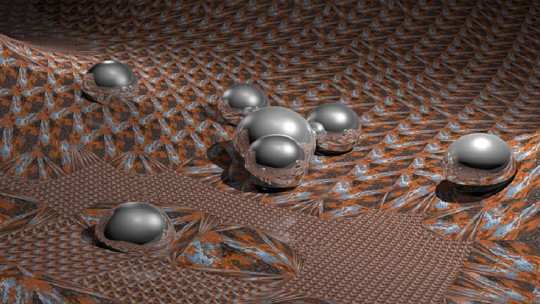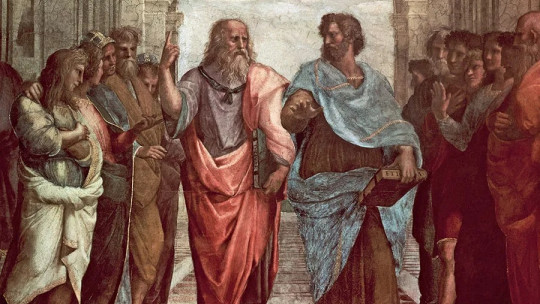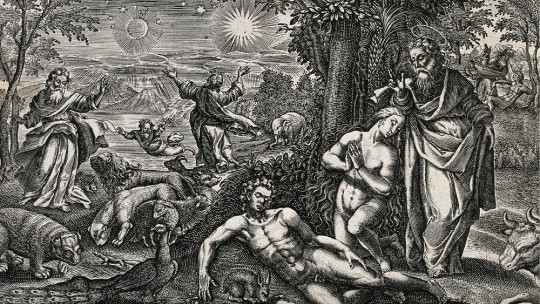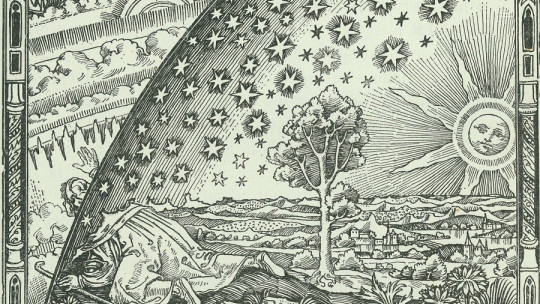
There is a lot we don’t know. Reality is something complex and difficult to interpret, to which humanity has tried over time to provide a plausible explanation. Religion, philosophy and science are some of the main ways through which we have attempted to explain the world, which have evolved over time. For example, in ancient times the existence of cells and molecules was unknown, even though today their existence is something that most people know. And even less the substances that make them up.
However, even before being able to examine any type of matter through a microscope, the Greeks generated a theory that considered that all matter was made up of groups of particles, which in turn could be reduced into smaller and smaller ones until reaching to an indivisible particle. We are talking about the appearance of atomism
Atomism: what it is, and general principles
Atomism is a philosophical paradigm born in ancient Greece, which considers that reality and the whole of matter is composed of different particles that can be reduced into increasingly smaller units until reaching the last particles that cannot be reduced or divided further: atoms. In reality, according to this paradigm, only atoms and emptiness exist.
This paradigm is a concept born in philosophy and that has subsequently been explored and used at a scientific level, being one of the main bases of chemistry. Atomism gives greater importance to the separate components than to the whole, considering that the fact of incorporating new atoms does not generate relevant differences in the elements they constitute. Atomism is also characterized by being essentially mechanistic
Different types
There are different types of classical atomism, divided into two specific positions: absolute physical atomism, which considers that everything, including the mind or concepts such as the soul or even God, are configured by atoms, and relative atomism in which matter only refers to atoms. the physical and corporeal.
absolute atomism
Absolute atomism is the best known at a philosophical level, being the first to emerge and the one that marked a style of thought that would allow subsequent developments. Everything is explained by the atom, everything that exists being matter. The atom, the void (in which nothing exists) and the movement of atoms It is what configures everything that exists, with different processes of aggregation and destruction of structures formed by atoms. Likewise, all matter is identical and has the same properties, and can differ only in degree.
relative atomism
Relative atomism It was born in order to separate physical matter from spiritual aspects The atom would therefore constitute only everything material, the soul or the deities being another type of matter. It is considered that how matter is organized is due to the order generated by divinity.
In turn, this relative physical atomism can be homogeneous if it considers that all atoms were equal with the exception of characteristics such as size, shape or behavior or heterogeneous if it considers that there is a diversity of atoms with their own differential characteristics.
Evolution through time
Atomism as such has not remained indifferent to the passage of time, but rather has been evolving in pursuit of scientific advances and the discoveries that have been produced in relation to the configuration of matter.
1. Atomism in antiquity
The emergence of atomism is attributed to Leucippus, author of the 5th century BC, who in the work Megasdiacosmos sets a certain precedent in this regard. However, the classical author most considered the true father of atomism was Democritus, a contemporary of Socrates. It was Democritus who proposed that the world was divided into atoms and void, this being the space through which atoms can move freely. Likewise, the atom is considered immutable, eternal and indivisible.
After Democritus, atomism It was worked on by different authors who were his disciples, such as Anaxagoras (who would propose the existence of elementary particles different from each other) or Empedocles (who mixed the concept of the atom with the four classical elements).
The last one who would follow the tradition proposed by Democritus would be Nausiphanes, teacher of Epicurus. From this, Epicurus generated a change of orientation in the thought of atomism, focusing it on human, moral and ethical elements and in turn on the mundane and on evidence (Democritus’ classic was more theoretical and cosmological). This tradition has various concepts that would later set a precedent for some of Karl Marx’s theses.
2. Middle Ages
With the arrival of the Middle Ages, atomism acquired different connotations, with relative physical atomism appearing and those who believed in it They consider that atoms are divine creation and their union obeys the law of God After this, different authors such as Paracelsus in the Renaissance would link it with alchemy.
3. Modern Age
Later, in the Modern Age, atomism would resurface at first linked to ecclesiastical dogma, although it was included in the debate about whether all atoms are equal (homogeneous) or different (heterogeneous), positions defended respectively by Gassendi and Maignan. Also multiple other authors support atomism, among them Newton
Contemporary age: the atom today
Scientific and technological development in recent centuries has allowed us to observe the existence of what are still considered the basic units of matter, the so-called atoms.
Dalton would generate one of the first scientific laws regarding atomism, already within current physics. Through the law of definite proportion and the law of multiple proportions It explained how the different chemical elements were combined: simple elements are composed of unalterable atoms whose characteristics explain the way in which the different weights of the elements make up a compound molecule.
Avogadro would contribute to the establishment of atomism as a scientist when classifying atomic weights based on the weight of hydrogen something that has also reached us today through the periodic table of elements described by Mendeleev.
However, with the discovery of electrons by Thompson in 1897, Rutherford’s experiments and Chadwick’s contribution, it has been discovered that in reality atoms are also composed of other electrically charged substructures, protons, neutrons and electrons. In fact, Classical physics would little by little be replaced by quantum physics as the behavior of these particles was studied and that they could even be subdivided, as is the case with the quarks discovered by Perl. He also engages and delves into the study of the forces that generate union and separation of matter.
Currently, even more primitive particles have been discovered, such as the recently discovered Higgs boson, or even antimatter, with no vacuum itself existing.
Yes ok What we call the atom today may not be the concept that the Greeks proposed it cannot be ruled out that a particle that is not divisible will end up being found, although there will always be a doubt as to whether with sufficient technology and capacity we could observe even more basic elements.








